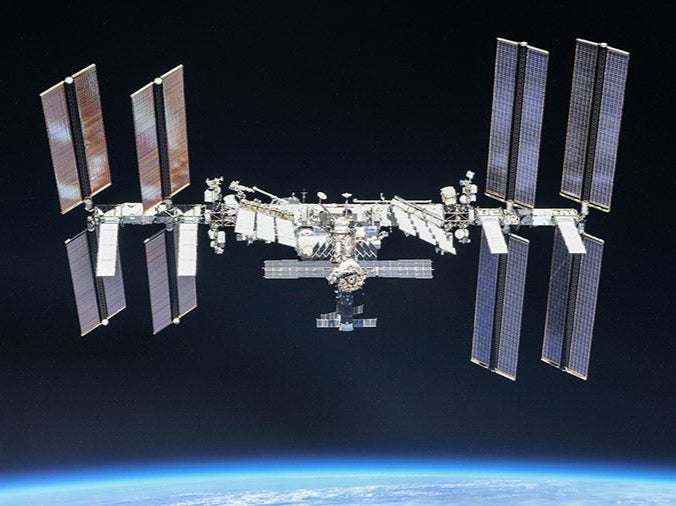International Space Station forced to carry out emergency manoeuvre to dodge debris
Discarded material came within kilometres of the ISS

Astronauts on the International Space Station (ISS) had to carry out an avoidance manoeuvre to avoid a potential collision with an unidentified object moving through space.
The “unknown piece of space debris” came within kilometres of the ISS, Nasa reported.
The space station had to use the Russian resupply spacecraft Progress to help it avoid the debris.
Progress was docked to the “aft end” (the rear) of the space station’s Zvezda service module at the time.
“Out of an abundance of caution, the Expedition 63 crew will relocate to their Soyuz spacecraft until the debris has passed by the station,” the agency said.
While the ISS will withstand assault from small pieces of space debris, it has to move to avoid larger ones. Nasa estimates that this needs to be done about once a year.
“If another object is projected to come within a few kilometres of the International Space Station, the ISS will normally manoeuvre away from the object if the chance of a collision exceeds 1 in 10,000,” Nasa says.
There are more than 23,000 pieces of orbital debris that are larger than 10cm, and at the start of this year there were at least 8,000 metric tonnes orbiting Earth.
Most comes from satellite explosions and collisions, but the debris can also include derelict spacecraft and debris intentionally released from spacecrafts during mission operations, as well as tiny bits of paint released by thermal stress or small collisions.
Orbital debris circles the Earth at about 7km-8km a second, Nasa says.
Recently astronauts on the ISS had to find an air leak, which had been letting out oxygen since September.
While the rate of depressurisation had increased, the leak still remained within specifications and was no threat to the astronauts on board.
Join our commenting forum
Join thought-provoking conversations, follow other Independent readers and see their replies
Comments


Bookmark popover
Removed from bookmarks